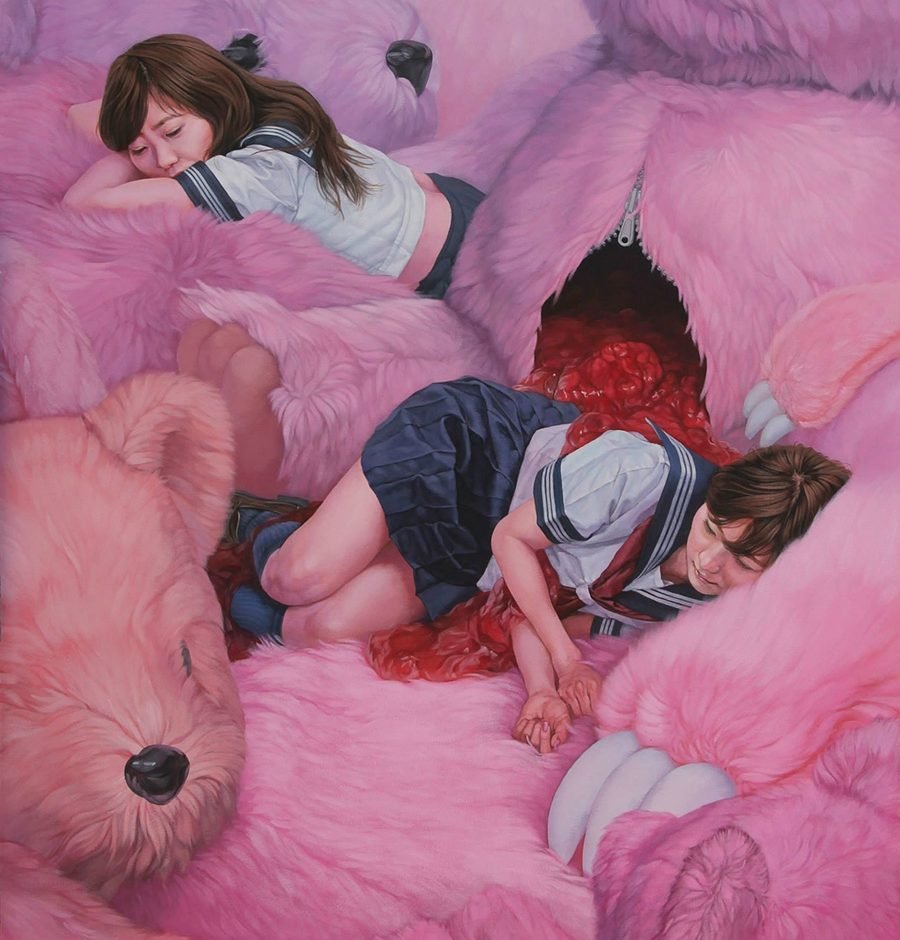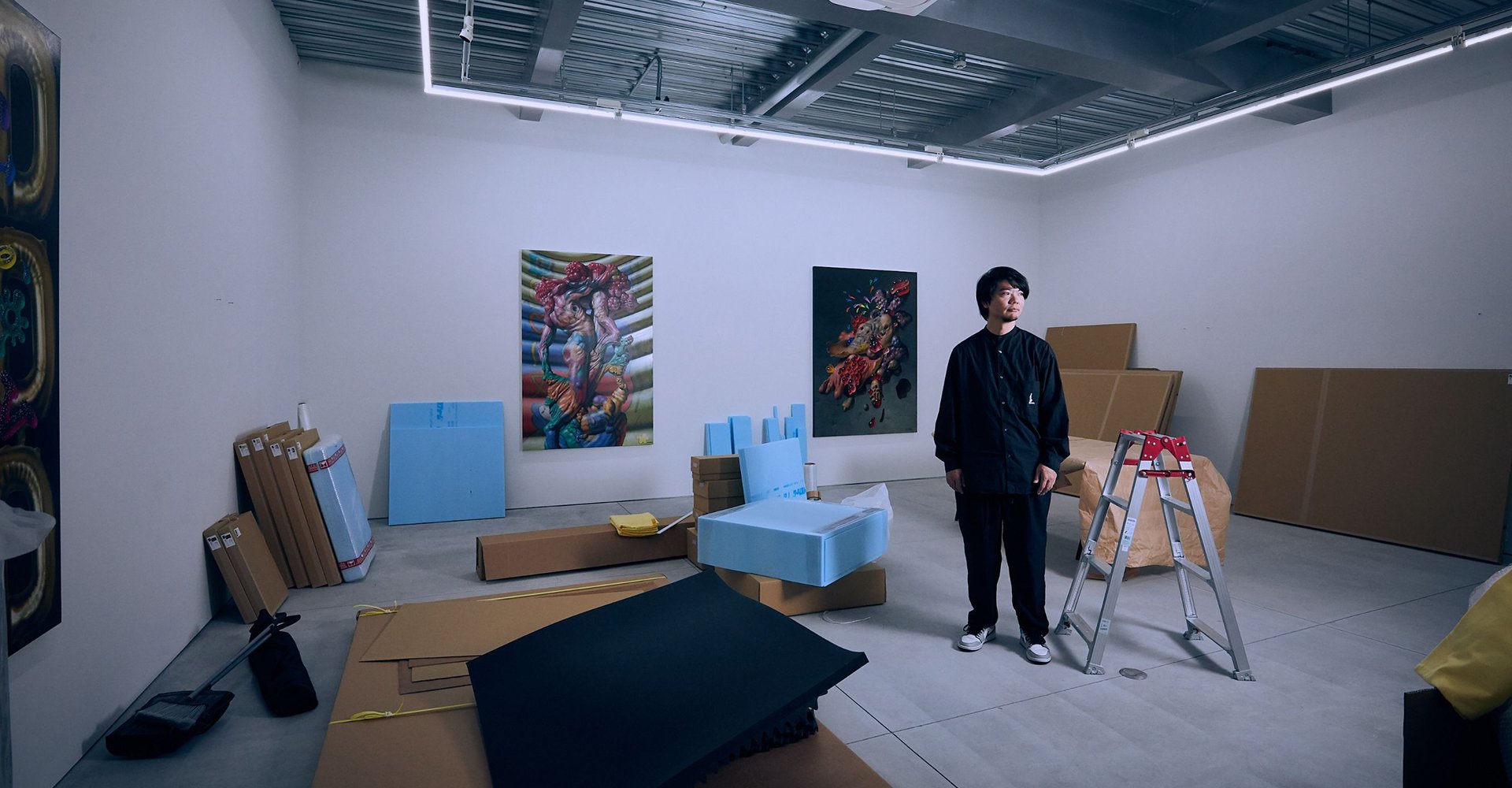Enter The Crazy World Of Masato Mori

Japanese gallery NANZUKA UNDERGROUND represents artists of Japan's pop art scene, such as Hajime Sorayama, Haroshi, Koichi Sato, and Toshio Saeki, to name a few.
Another member of the "Tokyo Pop Underground" group is artist Masato Mori, whose solo exhibition headlined the opening of NANZUKA UNDERGROUND's new flagship gallery in Harajuku last year.
Masato Mori was born in Tokushima in 1976 and graduated from Tama Art University in 3D-and Interior Design. He started his artistic career under the name of MUSTONE, a pseudonym that was influenced by graffiti art. He began to fuse the bold and clear layout in traditional Japanese paintings with the quick drawing technique in graffiti art, creating a new form of art that broke the status quo of the Japanese post-war art scene.
In 2001, he published a conceptual comic book called "Can Glow in the Dark," where he sought to enhance manga's possibilities from part of the sub-culture to a higher dimension.
Nowadays, he presents his artworks under his given name Masato Mori, but the influences of manga, video games, and graffiti remain. A prime example of this are the sculptural works he exhibited at Art Basel Miami in 2019.
The process of Mori's large-scale paintings begins on his tablet, where he creates the preliminary sketches for his drawings. After transferring them onto canvas, he completes the works by three-dimensionally overlaying the images with paint. Most of his works explore personal experiences and impressions from his daily life.
The sculptures feature vibrant colors and childlike humor, referencing characters from comic books and games. Likewise, Mori's paintings draw from the artist's background, as he began drawing by copying his favorite comic book characters in the 1980s.
According to the artist, his day-to-day life is "an extension of his various acts of play such as collecting insects, playing in the river, raising animals and plants, enjoying games and cartoons, eventually come to be collected as sources of inspiration for his work."





